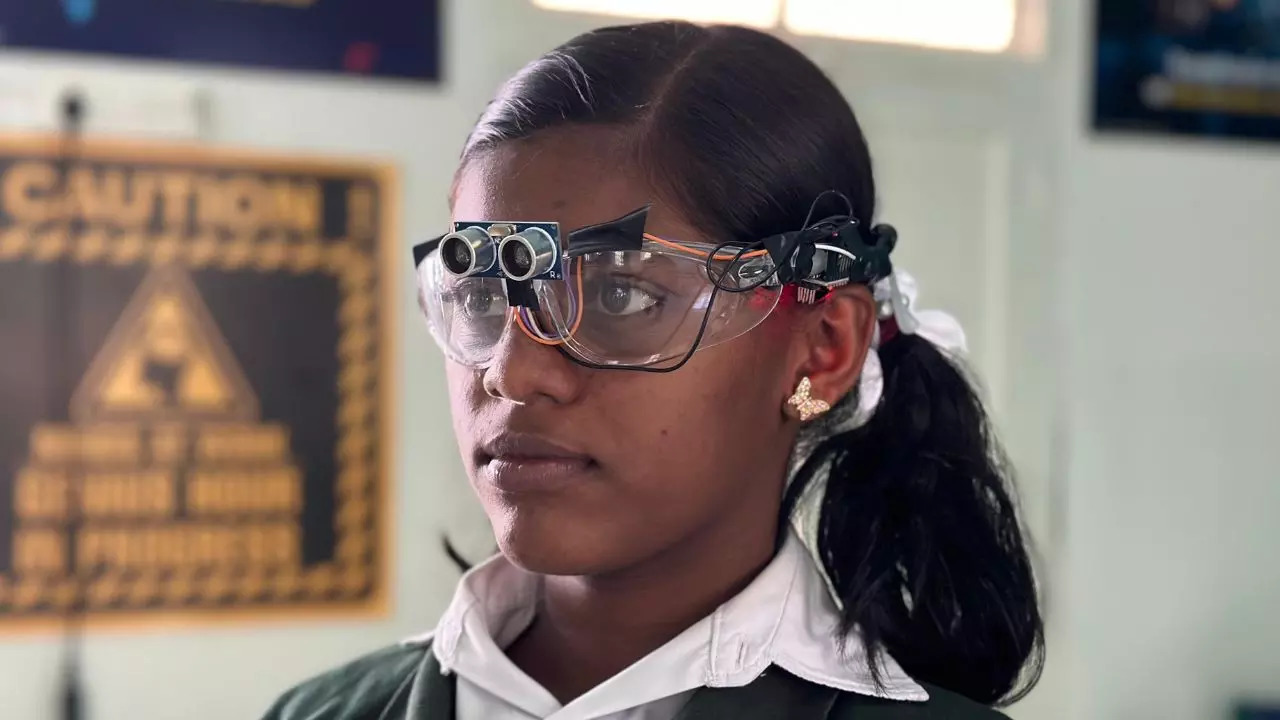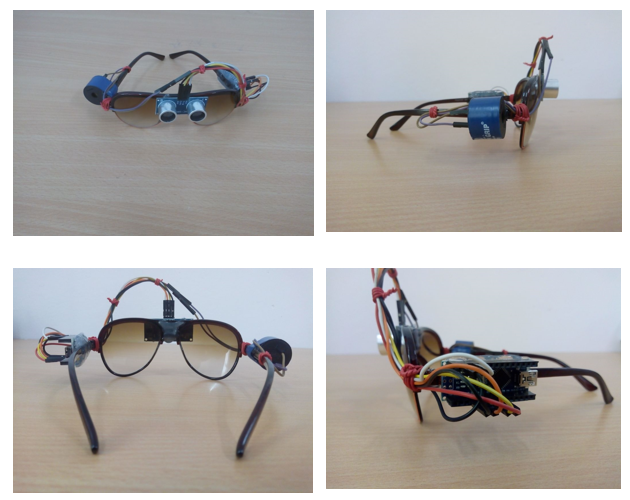Mobility Aids for Visually Impaired Users: Enhancing Independence and Navigation
Mobility Aids for Visually Impaired Users: Enhancing Independence and Navigation
Blog Article
Empowering Freedom With Assistive Technology for the Blind
The combination of assistive modern technology for individuals that are blind or aesthetically damaged stands for a significant improvement in promoting independence and improving top quality of life. With an array of devices-- from display visitors to innovative tactile tools-- these technologies not just promote navigation and communication however likewise advertise social incorporation and participation in various facets of life. As we explore the varied sorts of assistive devices and their real-world applications, it comes to be clear that the effect is extensive. Yet, the advancement of this technology raises critical concerns regarding access and future advancements that necessitate further examination. Assistive technology for the blind.
Understanding Assistive Technology
Although assistive technology has developed dramatically over the years, its basic purpose stays the exact same: to enhance the lifestyle for people with disabilities, particularly those that are blind or aesthetically impaired. This technology encompasses a wide variety of tools and tools that help with independence and performance in day-to-day activities.
Assistive modern technology can be classified right into sophisticated and low-tech services, each made to fulfill particular needs. Modern devices often consist of software application applications, specialized hardware, and flexible devices that make use of sophisticated innovation to supply support in numerous contexts. On the other hand, low-tech services might entail everyday things that are customized to enhance access, such as magnifiers or tactile markers.
The integration of assistive modern technology into the lives of people that are blind or visually harmed not just promotes freedom however likewise fosters social incorporation and participation in academic and professional settings. By leveraging these innovations, users can navigate their environments, access details, and interact successfully, thereby enhancing their general lifestyle. Understanding assistive innovation is critical for caregivers, professionals, and advocates who aim to support individuals in maximizing their potential and achieving higher self-reliance.
Sorts Of Assistive Tools
Assistive tools for the aesthetically impaired and blind are important tools that improve daily living by dealing with certain obstacles run into by customers. These tools can be generally categorized into 3 major kinds: optical devices, electronic gadgets, and sensory devices.

Sensory devices, such as Braille displays and responsive maps, provide different ways to receive information. Braille displays transform digital text into Braille, allowing users to check out via touch. Tactile maps offer spatial understanding through increased lines and appearances, permitting better ecological recognition.
Together, these assistive tools empower people with aesthetic disabilities to engage even more fully with their environments, promoting better self-reliance and self-confidence in daily activities.

Influence On Day-to-day Live
The integration of assistive innovation into the lives of people that are aesthetically impaired or blind significantly boosts their capability to connect and navigate with the globe around them. Devices such as screen viewers, Braille shows, and mobile applications facilitate access to information, enabling users to involve with digital web content, communicate efficiently, and handle day-to-day tasks individually.
Additionally, innovations like clever glasses and navigation applications provide real-time aid in unfamiliar atmospheres, boosting flexibility and self-confidence. These tools allow customers to identify challenges, Recommended Site read indicators, and also identify faces, thus promoting a feeling of freedom in public areas. In addition, home automation systems, which can be managed with voice commands, permit people to manage their living atmospheres extra effectively, enhancing comfort and safety and security.
The impact of assistive innovation extends beyond practical tasks; it advertises social addition and emotional wellness. By connecting the space between individuals and their environments, these technologies equip individuals to take part completely in area tasks, pursue academic chances, and participate in significant relationships. Ultimately, the improvement of assistive technology is critical in redefining the possibilities for individuals who are blind or visually damaged, bring about a much more available and comprehensive culture.
Success Stories and Testimonials

Another powerful testimonial comes from Mark, a current college graduate who used display reading software throughout his academic trip. This technology allowed him to accessibility course materials and join conversations, ultimately bring about his effective change into the workforce. Mark credit histories assistive modern technology for equipping him to attain his career goals, stressing its function in leveling the playing area for individuals with visual problems.
Furthermore, recreation center have reported boosted participation in their programs thanks to the intro of available digital systems. These systems have actually made it much easier for people to connect, share resources, and support one an additional. These success stories jointly emphasize the extensive impact of assistive modern technology in promoting self-reliance, enhancing lifestyle, and damaging down obstacles for the blind and visually damaged community.
Future Fads in Assistive Technology
Emerging technologies are poised to change the landscape of assistive technology for individuals that are aesthetically impaired or blind. Innovations in fabricated knowledge (AI) and artificial intelligence are boosting the abilities of devices, allowing more instinctive individual experiences. For example, AI-driven applications are increasingly able to read and identify items message aloud in real-time, giving customers with important details about their environments.
Additionally, developments in wearable innovation are creating brand-new chances for freedom. Smart glasses outfitted with augmented fact features can overlay critical information onto the user's visual field, helping with navigating and communication with the atmosphere. The integration of Web of Points (IoT) gadgets is enhancing accessibility in smart homes, enabling individuals to manage home appliances and obtain notices through voice commands or tactile interfaces.
The development of braille displays and tactile responses systems is additionally increasing, advertising view it now accessibility to electronic material and boosting communication. As these technologies remain to advance, they assure to boost everyday living, instructional possibilities, and employment potential customers for individuals with aesthetic impairments. Constant partnership between engineers, users, and campaigning for teams will certainly be vital in ensuring these advancements satisfy the needs of the community effectively.
Verdict
To conclude, assistive innovation plays a critical role in enhancing the freedom of people who are blind or aesthetically damaged. By offering important devices and resources, these innovations promote enhanced navigation, access, and interaction to information, thus cultivating autonomy and confidence. The transformative impact of assistive gadgets not only advertises effective interaction with the atmosphere yet additionally motivates social incorporation and participation in numerous aspects of life, inevitably equipping customers to prosper within their communities.
The combination of assistive modern technology for individuals who are aesthetically impaired or blind represents a look at this site considerable advancement in promoting freedom and enhancing high quality of life.The assimilation of assistive technology right into the lives of individuals that are blind or aesthetically impaired not only advertises autonomy yet also promotes social incorporation and participation in academic and expert atmospheres. Inevitably, the innovation of assistive technology is crucial in redefining the possibilities for people that are aesthetically damaged or blind, leading to an extra available and inclusive society.
Several individuals who are blind or aesthetically damaged have shared inspiring success stories that highlight the transformative impact of assistive modern technology on their lives.In final thought, assistive innovation plays a pivotal function in enhancing the freedom of individuals that are blind or aesthetically damaged.
Report this page